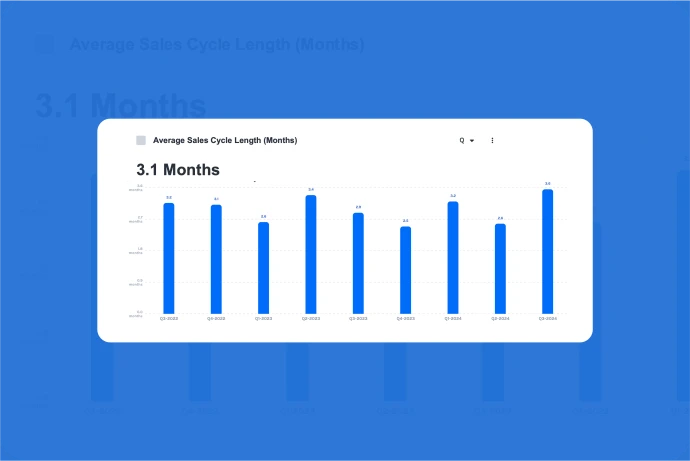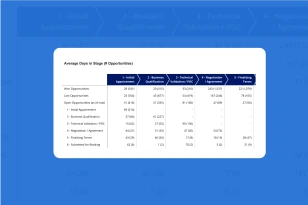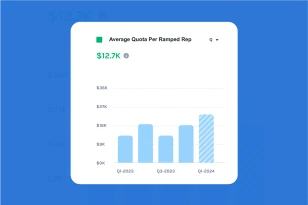What is Average Sales Cycle Length?
Average Sales Cycle Length measures the average time that passes between an opportunity’s creation and being marked as “Closed Won”.
There is a correlation between average sales cycle and average sales price. Companies selling to smaller companies, with low ASPs, often have shorter sales cycles because the sales process likely involves fewer customer stakeholders. Companies that sell large deals to enterprise customers typically have a longer sales cycle.
Why is it Important to Monitor Average Sales Cycle?
Average Sales Cycle is crucial for several reasons:
- Operational Efficiency: It provides insights into the efficiency of the sales process. A shorter sales cycle indicates that the sales team can convert leads into customers more rapidly, contributing to operational efficiency.
- Revenue Forecasting: Understanding the average time it takes to close deals helps in more accurate revenue forecasting. It allows the company to plan resources, set realistic targets, and make informed decisions about growth and expansion.
- Customer Experience: A shorter sales cycle is often associated with a more streamlined and responsive sales process. This positively impacts the customer experience, demonstrating agility and responsiveness to customer needs.
- Resource Allocation: Efficient sales cycles enable better resource allocation. The sales team can focus efforts on high-potential leads, and marketing strategies can be adjusted based on the time it takes for leads to convert into customers.
How do you Calculate Average Sales Cycle?
You can calculate average sales cycle length by identifying the period of time you are evaluating – whether that’s for the week, month, quarter, or year. Then, you’ll sum up the cycle lengths for all opportunities won in the period. Then, you’ll divide this number by the count of deals won in the period.
Sales Cycle Formula
(Sum of Individual Sales Cycle Lengths) / (Count of Closed Won Deals)
How do you Improve Average Sales Cycle Length?
Improving the Average Sales Cycle involves strategies to streamline the sales process and enhance efficiency. Here are some approaches to improve this metric:
- Lead Qualification Process: Implement a robust lead qualification process to identify high-potential leads early in the sales funnel. This ensures that the sales team focuses on leads with a higher likelihood of conversion, reducing unnecessary delays.
- Sales Automation Tools: Invest in sales automation tools to streamline routine tasks, such as email communications, appointment scheduling, and document generation. Automation reduces manual effort, allowing the sales team to move deals through the pipeline more swiftly.
- Training and Skill Development: Provide comprehensive training to the sales team, focusing on sales techniques, objection handling, and effective communication. Well-trained sales representatives are more likely to navigate the sales process efficiently and close deals in a timely manner.
- Clear Communication and Expectations: Ensure clear communication between sales and marketing teams. Align expectations regarding lead quality, target audience, and messaging to prevent misalignment that could lead to delays in the sales cycle.
- Effective Sales Collateral: Provide sales representatives with effective and targeted sales collateral. Well-designed and persuasive materials can facilitate quicker decision-making and shorten the time it takes for prospects to move through the sales cycle.
- Incentivize Speed: Implement incentive structures that reward sales representatives for closing deals within a shorter timeframe. Creating a sense of urgency can motivate the team to expedite the sales cycle while maintaining quality.




